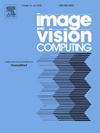Rotating-YOLO: A novel YOLO model for remote sensing rotating object detection
IF 4.2
3区 计算机科学
Q2 COMPUTER SCIENCE, ARTIFICIAL INTELLIGENCE
引用次数: 0
Abstract
Satellite remote sensing images are characterized by large rotation angles and dense targets, which result in less than satisfactory detection accuracy for existing remote sensing target detectors. To tackle these challenges, this paper introduces an object detection algorithm called Rotating-YOLO, which ensures the detection accuracy of remote sensing targets while also reducing the number of model parameters. Initially, an efficient multi-branch feature fusion (EMFF) is designed to filter out redundant feature information, thereby enhancing the model’s efficiency in feature extraction and fusion. Subsequently, to address the issue of sample imbalance in remote sensing images, this paper introduces angular parameters and adopts rotated bounding boxes to decrease the interference of background noise on the detection task. Additionally, the rotated bounding boxes are transformed into Gaussian distributions, and a new loss function named GaussianLoss is designed to calculate the loss between Gaussian distributions, assisting the model in better learning the size and orientation features of targets, thus improving detection accuracy. Finally, the efficient multi-scale attention (EMA) mechanism is embedded in the model’s neck in a residual form, and low-level feature extraction layers and corresponding detection heads are added to the backbone network to enhance the detection accuracy of small targets. Experimental results demonstrate that compared to the baseline model YOLOv8, the Rotating-YOLO model has reduced the number of parameters by 33.25% and increased the mean average precision (mAP) by 1.4%.

求助全文
约1分钟内获得全文
求助全文
来源期刊

Image and Vision Computing
工程技术-工程:电子与电气
CiteScore
8.50
自引率
8.50%
发文量
143
审稿时长
7.8 months
期刊介绍:
Image and Vision Computing has as a primary aim the provision of an effective medium of interchange for the results of high quality theoretical and applied research fundamental to all aspects of image interpretation and computer vision. The journal publishes work that proposes new image interpretation and computer vision methodology or addresses the application of such methods to real world scenes. It seeks to strengthen a deeper understanding in the discipline by encouraging the quantitative comparison and performance evaluation of the proposed methodology. The coverage includes: image interpretation, scene modelling, object recognition and tracking, shape analysis, monitoring and surveillance, active vision and robotic systems, SLAM, biologically-inspired computer vision, motion analysis, stereo vision, document image understanding, character and handwritten text recognition, face and gesture recognition, biometrics, vision-based human-computer interaction, human activity and behavior understanding, data fusion from multiple sensor inputs, image databases.
 求助内容:
求助内容: 应助结果提醒方式:
应助结果提醒方式:


